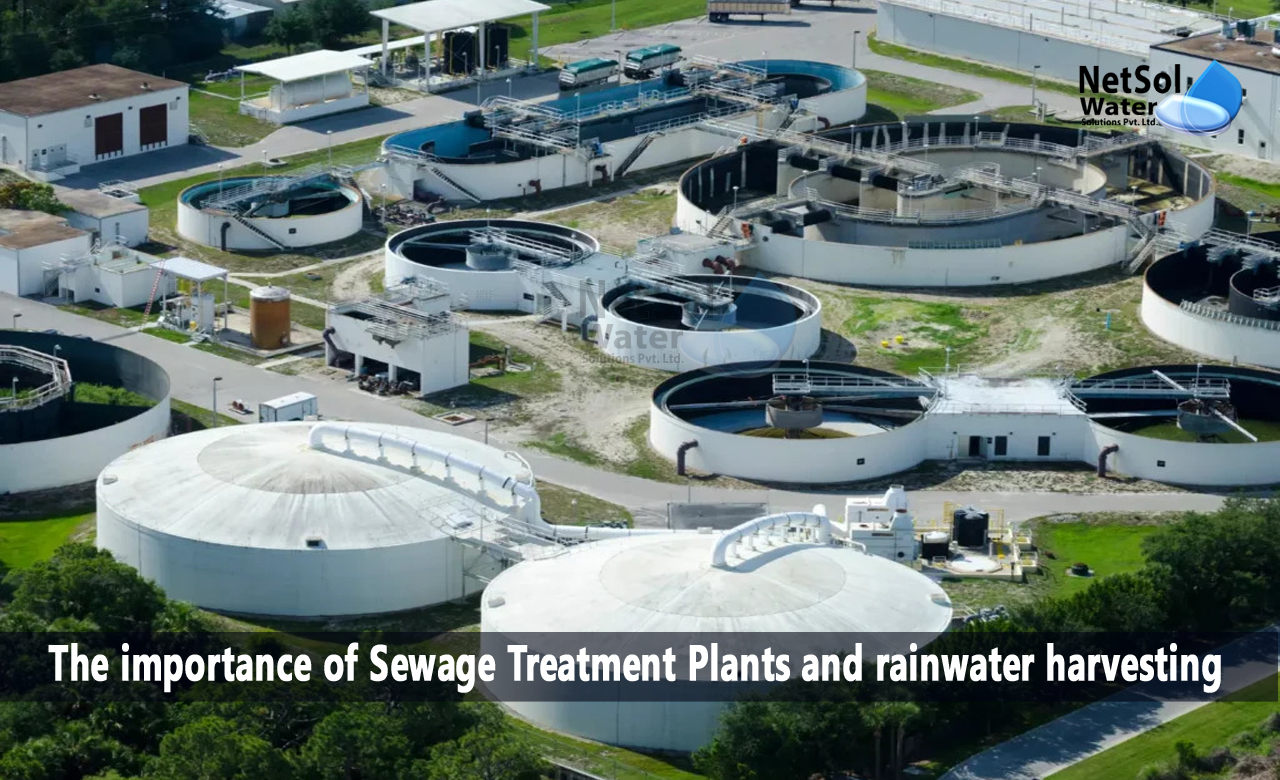STP Plant and Rainwater Harvesting: Stormwater Management Strategies
With the increasing pressure on water resources and the need for sustainable development, effective stormwater management has become a crucial aspect of urban planning. Sewage treatment plants and rainwater harvesting are two essential components of stormwater management strategies that can help mitigate water scarcity, reduce pollution, and promote environmental sustainability. Integrating these two approaches can provide comprehensive solutions to address water management challenges in urban areas.
In this blog, we will explore the importance of sewage treatment plants and rainwater harvesting, and discuss the benefits of integrating these strategies for effective stormwater management.
The Role of Sewage Treatment Plants
Sewage treatment plants (STPs) play a vital role in treating and purifying wastewater generated from domestic, commercial, and industrial sources. The primary objective of an STP is to remove contaminants and pollutants from sewage, ensuring that the treated water can be safely discharged into the environment or reused for various purposes. The process typically involves several stages, including physical, biological, and chemical treatment methods to remove solids, organic matter, and harmful substances.
Benefits of Sewage Treatment Plants:
- Pollution Reduction: STPs significantly reduce the pollution load in water bodies by removing contaminants before discharge, preventing the degradation of aquatic ecosystems and protecting public health.
- Resource Recovery: Advanced STPs can recover valuable resources such as energy, nutrients, and water from wastewater, promoting a circular economy and reducing dependence on external resources.
- Water Reuse: Treated wastewater can be reused for non-potable purposes such as irrigation, industrial processes, and toilet flushing, reducing the demand for freshwater resources.
The Importance of Rainwater Harvesting
Rainwater harvesting involves collecting, storing, and utilizing rainwater for various purposes. It is a sustainable practice that has been used for centuries to augment water supplies in regions facing water scarcity or unreliable access to clean water sources. Rainwater harvesting systems can range from simple rooftop collection systems to more complex setups with storage tanks, filtration mechanisms, and distribution networks.
Benefits of Rainwater Harvesting:
- Water Conservation: By capturing rainwater, we can reduce the demand for freshwater from conventional sources like rivers, lakes, and groundwater, thereby conserving precious water resources.
- Flood Mitigation: By capturing rainwater and directing it into storage tanks or infiltration areas, rainwater harvesting systems can help mitigate urban flooding by reducing stormwater runoff and peak flow rates.
- Self-Sufficiency: Rainwater harvesting provides a decentralized water supply option, allowing individuals and communities to become more self-sufficient and less reliant on centralized water distribution networks.
Integrating Sewage Treatment Plants and Rainwater Harvesting
Integrating sewage treatment plants and rainwater harvesting can bring significant advantages in stormwater management. Here are some key benefits of this integration:
- Enhanced Water Availability: By treating wastewater from STPs and combining it with harvested rainwater, a reliable and sustainable water supply can be created, reducing the pressure on freshwater sources and ensuring a consistent water supply even during drought conditions.
- Improved Water Quality: Rainwater harvesting can help reduce the load on STPs by diverting clean rainwater away from the sewage system. This decreases the volume of wastewater that needs treatment, allowing STPs to focus on effectively treating sewage and improving the overall water quality.
- Sustainable Development: Integrating these strategies aligns with the principles of sustainable development by reducing water scarcity, conserving resources, and minimizing pollution. It promotes a holistic approach to water management, fostering environmental and social well-being.
- Climate Change Resilience: The integration of sewage treatment plants and rainwater harvesting can enhance the resilience of urban areas to climate change impacts. By capturing rainwater and utilizing treated wastewater, communities can adapt to changing precipitation patterns and ensure water availability even in the face of uncertain weather conditions.
Conclusion
Integrating sewage treatment plants and rainwater harvesting provides a comprehensive approach to stormwater management, addressing both water quality and quantity challenges in urban areas. This integration promotes sustainable development, reduces water scarcity, and mitigates pollution, contributing to a more resilient and water-efficient future. Governments, communities, and individuals should embrace these strategies and work together to implement and promote such initiatives to ensure the sustainable use of water resources for generations to come.
Netsol Water is Greater Noida-based leading water & wastewater treatment plant manufacturer. We are industry's most demanding company based on client review and work quality. We are known as best commercial RO plant manufacturers, industrial RO plant manufacturer, sewage treatment plant manufacturer, Water Softener Plant Manufacturers and effluent treatment plant manufacturers. Apart from this 24x7 customer support is our USP. Call on +91-9650608473, or write us at enquiry@netsolwater.com for any support, inquiry or product-purchase related query.



